You photograph within a tradition in which travel or a road trip becomes part of the process. How much do you prepare regarding locating sites. Also, since the photographs are made from an elevated position I am interested to know whether you sense photographic opportunities from the ground level.
Scott Conarroe (SC): Well, I arrived at art with a functional road trip practise already in place. Most of the decade between high school and my BFA was spent living out of a van… yes, The Nineties. I’d work seasonally in the mountain parks or bush, then I’d enjoy a few months skiing and farting around. Even my art school years were split between the van and apartments. The case could be made that my primary practise is vagrancy and photography helps me masquerade as a professional.
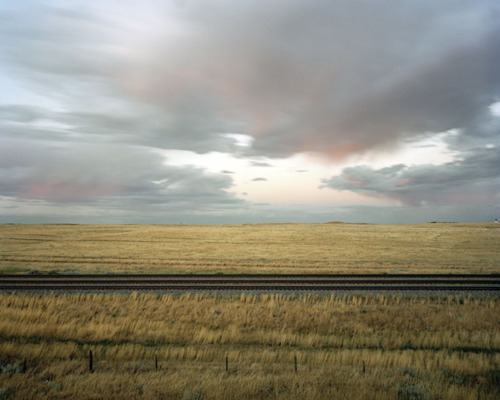
© Scott Conarroe from the series 'By Rail', Prairie Tracks, Saskatchewan, 2008
For By Rail and By Sea I didn’t plan the routes much. I set up a few artist talks and drifted between them. These were nice, expansive projects but structured concisely enough (railroads, coastline) to keep me on track. Sometimes I consult Google Earth to see the lay of the land, but usually I just go places I’d like to spend a day or three or twenty and ride my bike around looking for things to climb up . The things I photograph are often determined by their proximity to something I can get on top of. There’s a spiel about how/why the elevated perspective functions aesthetically, rhetorically and in the history of image making, but mostly I like the privacy it affords me. Sometimes I make exposures at ground level (and sometimes I really like them), but generally I feel conspicuous and a little silly on the street. Up high, where I’m hard to notice or approach, it feels like watching the show rather than setting up a 4x5 spectacle.
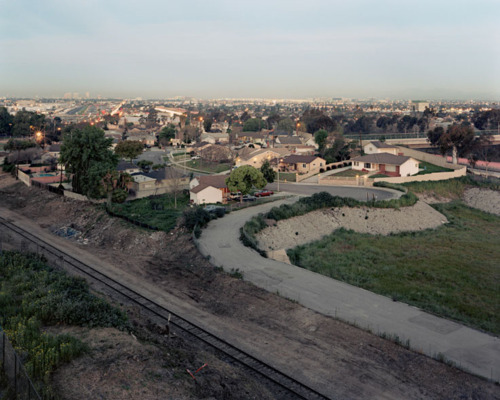
© Scott Conarroe from the series 'By Rail', Cul de Sac, Hawthorne CA, 2008
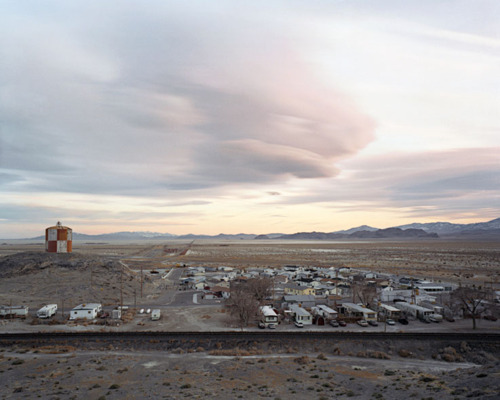
© Scott Conarroe from the series 'By Rail', Trailer Park, Wendover UT, 2008
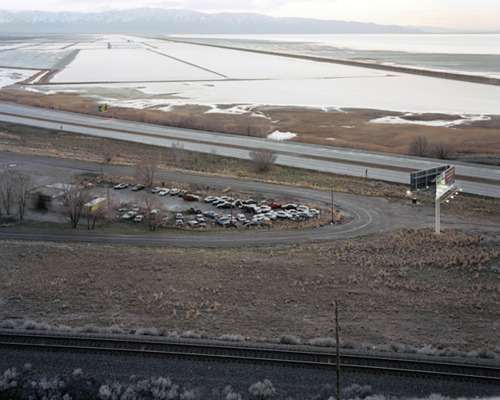
© Scott Conarroe from the series 'By Rail', Car Lot, Great Salt Lake UT, 2008
The By Rail pictures present the tracks as a constant within diverse landscapes. What interested you initially about the idea of rail transportation and how did it evolve into this series?
SC: In 2003 I went from Vancouver to Canada’s east coast for grad school. Two years later I moved halfway back. With each move, stuff got thrown out. I noticed a lot of the photos I kept keeping -pictures of various places and things- had train tracks in them. It struck me that most everywhere I went was defined at least in part by railways. At the time I was also trying to evolve beyond my station of thirty-something year-old labourer with an MFA. I’d gotten a little recognition in Atlantic Canada by living there and making work, and I was gaining traction in southwestern Ontario for similar reasons. I got it in my head that to be relevant beyond a regional context I should go make pictures in and about the larger world. From there it was easy to get excited about the project that became By Rail.
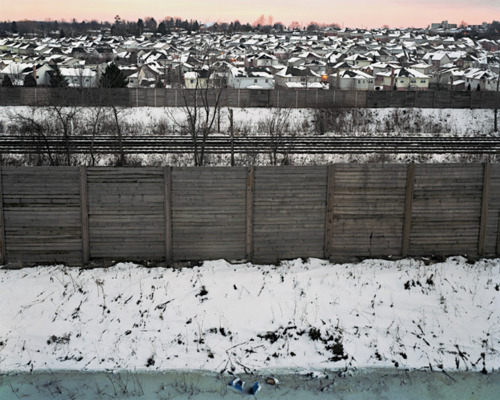
© Scott Conarroe from the series 'By Rail', Suburb, London ON, 2007
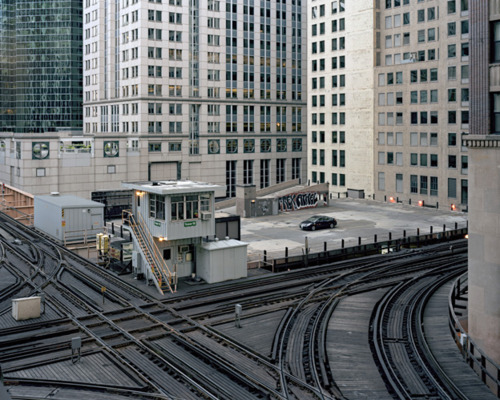
© Scott Conarroe from the series 'By Rail', Loop Canyon, Chicago IL, 2007
As a thread of continuity, railways could take me a lot of places. As a conceptual device, the constancy they inscribe on such a vast landscape is inspired. As a motif, train tracks are fairly charming. And as a subject, North America’s relationship with rail fascinates me. They were crucial in our journey from hinterland to industrial power; they opened up the interior and west for settlement, they dictated the fates of immigrants and industrialists and native populations, and many modern cities grew out of whistle-stops. In a sense railways defined this westernmost of Western civilizations, then somewhere along the way we became uniquely hostile to them. For decades we’ve insisted rail doesn’t work while every other developed nation refined their systems; this suggests something distinct in our psychology. Much of North America’s rise came along with the creation of a rail infrastructure, and I see its dismantlement as emblematic of that era’s conclusion.
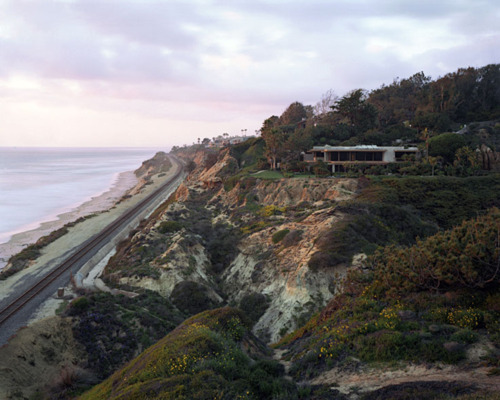
© Scott Conarroe from the series 'By Sea', The Coaster, Del Mar CA, 2010
It’s also telling that By Rail is kind of seen as a throwback project. While I shot it the term “peak oil” entered our vocabulary, and the same auto sector that revived musclecars also needed huge subsidies just to keep the lights on. China began a massive rail expansion that will transform it like Interstate highways redefined America in the last century. Obama, the newly-elected symbol-savvy multi-racial Leader Of The Free World, rode a train to his inauguration and named “Amtrak Joe” Biden his vice-president. By Rail is as much about the world we live in as it is about the past.
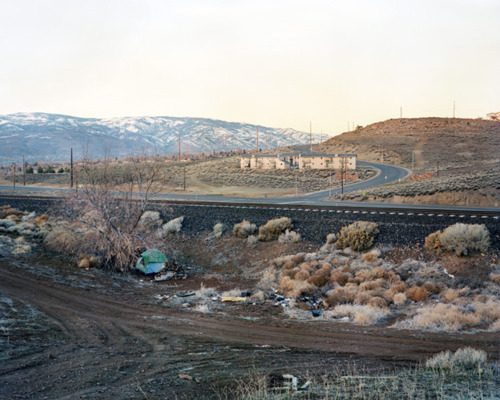
© Scott Conarroe from the series 'By Rail', Hobo Camp, Reno NV, 2008
The elevated viewpoint, the time of day and the subject matter of the By Railand By Sea projects makes me reflect upon the transitory nature of things. Could you talk about Time in relation to your pictures?
SC: Maybe I’ll confess it was just a few years ago I began identifying my work as documentary. I suppose because of where and when and with whom I went to school I tended to have Conceptual Artconversations and think of my practise in those terms. I always made work about Time though; Photo is good for that.
I like beauty and have formalist tendencies. The scene I knew privileged concept and process-driven art. To make my pretty landscape pictures acceptable I built aspects of that photographic looking-at-one-moment-from-the-perspective-of-another logic into every stage of my work. On one hand, I like how twilight looks and the ways dimness can translate onto film; I can make exposures for several minutes or until a car is about to push its headlights into my frame, or I can accumulate intervals of stillness a few seconds at a time. On the other hand, the transition between day and night is symbolically rich for someone resolving contradictory values. I like when the sun’s afterglow plays off a few electric lamps, and how those different illuminations allude to tensions between a world that unfolds gradually and one with a binary on-off intelligence, and between romantic and pragmatic ideals… I like that the sun is already shining somewhere else when I make a photograph and that the lights in the scene don’t do much but call attention to the fact of light. My pictures aren’t about the “decisive moment”; they’re about durations condensed into instants and how a camera abstracts Time and Space and Light into static image planes. Somehow these are the notions that led to my documentary practise.
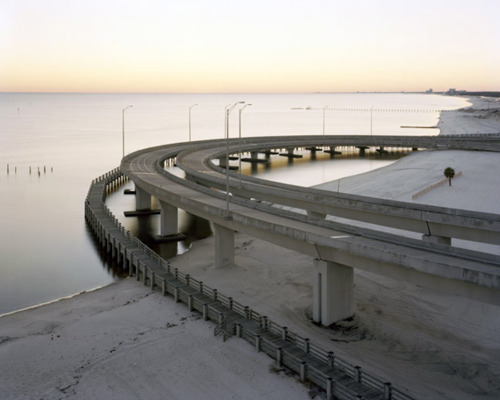
© Scott Conarroe from the series 'By Sea', Loop, Biloxi MS, 2010
The elevated viewpoint is useful in this conversation because it dislocates the usual vantage of five or six feet off the ground. By suspending perspective, Place becomes less an area we could hypothetically occupy and more a diagram of such a space. It is rendered somewhat placeless. I think these senses of being and being without are what you’re describing as transitory.
Over the past few years I’ve chosen seemingly basic topics that become ambivalent quickly. Rail lines are the subject of By Rail, but they function like extras rather than stars; they’re seldom the focus of scenes and often they’re barely even there. I see the tracks and camera as parallel apparatuses; they were born of the same period and revolutionized the world in similar ways, and now they both sit perfectly still while the world washes over them… so yes, By Rail is way more about Time than steel.
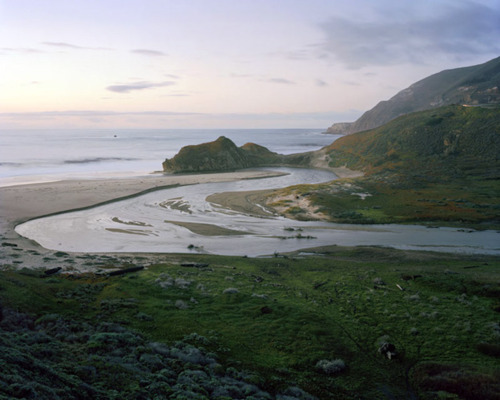
© Scott Conarroe from the series 'By Sea', River Mouth, Cabrillo Highway CA, 2010
By Sea is a similar project, but it’s inverted somehow. It also follows a line, but rather than receding from certainty, the coastline is fluid and flexing. Where By Rail is vaguely elegiac, I think By Sea imagines the dawn of some new era where environmental phenomena dominate our psyches a little more. I read it as anticipating nostalgia for this time when we can still wonder if climate change is really a big deal.

© Scott Conarroe from the series 'By Sea', Bixby Creek Bridge, Big Sur CA, 2010
Hilda and Bernd Becher presented their subjects, which included disappearing blast furnaces and water towers, as typologies. The precise and distanced rendering of their subjects, I think, co existed with a romantic vision. I see your work, in this sense, as sharing this attitude toward your subjects. Which artists, visual or otherwise have influenced the way you make pictures?
SC: I see the Bechers as romantic too. I think it’s called projection. Regardless, they’re definitely an influence. I used to think I was working in opposition to some excessive tightness -of vision, of thought, of method- but now I appreciate their frankness and fidelity. I’m not in love with the Bechers’ oeuvre, but I am indebted to them. Jeff Wall does something similar for me.
Hiroshi Sugimoto’s movie theatres are pretty perfect though. They’re tight in the best way. I also imagine Simon Norfolk’s Afghanistan: Chronotopia as a sort of friend to my work; when I use to be a delivery guy I’d to go across the street to Duthie Books between orders and greasy up their copy with my restaurant fingers.
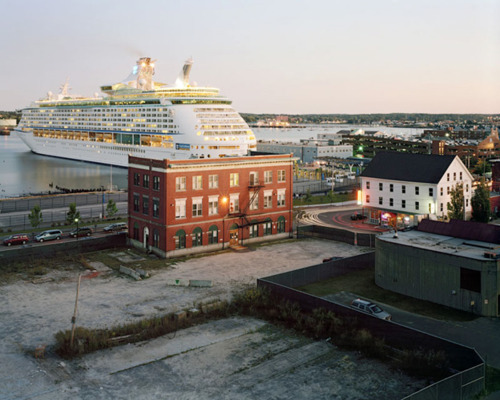
© Scott Conarroe from the series 'By Sea', Cruise Ship, Portland ME, 2009

© Scott Conarroe from the series 'By Sea', Trees, Brooklyn NY, 2009
I think most of my photographic instincts stem from an early introduction to Impressionism though. When my brother came back from his semester in Europe I think he worried we were complete yokels. As remedy, he presented our family with a gigantic Impressionism book that sat on the living room table for years. There was nowhere else for it. I absorbed it throughout my adolescence, and I even remember reading chunks of the essay. My palette, ideas on optical mixing, and the way I present space feel in keeping with that legacy.

© Scott Conarroe from the series 'By Sea', Dome House, Surfside TX, 2010
Outside the visual… Bruce Springsteen’s “Ghost of Tom Joad” and the Richard Ford Frank Bascombe Trilogy were perfect companions during my North America projects. Simon Winchester accomplishes what I’d like my work to do some day; his books are epic and tender and informative and casual and rigorous portraits of places and notions and events. He turns up over and over while I “research” my next project and one I’ve just started turning over.

© Scott Conarroe from the series 'By Sea', Large Automobile, Santa Monica CA, 2010
Project were made with assistance from the Canada Council for the Arts, the Ontario Arts Council, and Light Work. By Rail catalog is now available from Stephen Bulger Gallery.
---
LINKS
Scott Conarroe
Canada
share this page
